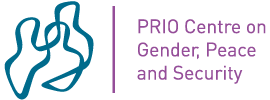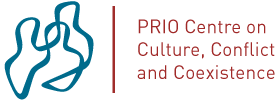The asylum paradox – yes. But what now?
Posted Friday, 20 Jun 2025 by Marta Bivand Erdal & Guri Tyldum

Stating that the asylum system in Europe is dysfunctional, is hardly a novelty. It’s even been described as contributing to what has been referred to as an “asylum paradox.”
The UN Refugee Convention was established to protect the right of those fleeing persecution to seek safety. Yet today, many of the very European countries that have ratified this convention are investing heavily in keeping refugees out. In practice, the right to asylum is being undermined by measures designed to prevent people from accessing it.
The "asylum paradox" concerns how the right to protection is managed in practice in Europe today. When refugees are free to choose where to seek asylum, some countries may receive disproportionately high numbers of asylum seekers. The individual right to protection enshrined in the Refugee Convention then collides with a reality where wealth and peace are scarce and unequally distributed across the globe.
A system in denial
The consequences are as tragic as they are well-documented. Europe has spent years fortifying its external borders and restricting access to asylum procedures. At the same time, more than 30,000 people have died crossing the Mediterranean over the past decade. Many of them came from countries such as Afghanistan, Myanmar, and Syria – people who would likely have been granted refugee status under the Convention or on humanitarian grounds in European countries such as Norway.
Some ask why this debate hasn’t happened sooner. In truth, it has – repeatedly. The real question is why, after all this time, we still haven’t found credible solutions.
When the Refugee Convention was drafted, there was discussion about assigning special responsibility to neighbouring countries (first safe countries) to receive refugees. In practice, it is these neighbouring countries that host the majority of the world’s refugees. However, such responsibility was not included in the Convention, as no fair mechanisms for sharing the burden in times of high arrivals could be agreed upon.
The same applies to countries near conflict zones or regions of widespread persecution. When the number of people fleeing increases, neighbouring countries sometimes close their borders – temporarily or permanently – due to local pressures and concerns.
A broken promise
Today, the only real form of relief for these neighbouring countries the possibility of onward movement is currently the real form of relief. So few quota refugees are now resettled from neighbouring countries that the system no longer functions. It is not a viable solution for protracted refugee situations – neither for host countries nor for refugees.
Historically, however, there are examples of successful systems. In the late 1970s, for instance, more than 750,000 refugees from Vietnam and Cambodia were resettled globally over a ten-year period.
The Refugee Convention was written after the Second World War. The thinking was that “never again” should people fleeing for their lives and safety be without safe places to go. Most would agree that this is how it should be. But this right is not meaningful if we lack the mechanisms to ensure that neighbouring countries don’t end up closing their borders.
Can we do this by establishing internationally-run refugee camps in neighbouring countries or elsewhere? Possibly. But camps are only a stopgap.
We need long-term solutions
Refugee camps may provide food, shelter, and emergency care in the short term – especially when large groups arrive all at once. But they are no long-term solution.
The increase in refugee numbers globally is largely due to the fact that today’s conflicts are extremely protracted. Many refugees never have the opportunity to return home. When Lebanon refused to allow the international community to establish camps for Syrian refugees, it must be seen in the context of the country’s experience of generations of Palestinian refugees growing up in camps – marginalized, without passports or rights.
Whether one argues from a humanitarian, ethical, or even security perspective, one fact is undeniable: It is a profoundly bad idea to let young people from war-torn regions grow up in camps, generation after generation, with no hope for the future.
Prolonged crises demand lasting solutions. Refugees need long-term solutions. A new home. A place to live. A chance to be economically self-sufficient – for themselves and for their children, who grow up just as quickly as our own.
It is not a given – nor necessarily desirable – that such a high share of the world’s refugees should seek protection in Northern Europe. But the key issue here is time.
When crises are prolonged, we need more than just keeping refugees in camps waiting to return. If local integration in the region is not feasible for everyone, then resettlement in third countries remains a logical alternative.
A need to find new solutions, before we give up the old system
But how do we ensure a fairer global distribution of refugees? Are there ways to ease pressure on host countries that do not involve dangerous and illegal border crossings into Europe?
Fortunately, some progress is being made in the search for solutions to the asylum paradox. The UNHCR and other actors are developing new models. Among them is the idea of “employment pathways”, where refugees’ skills and labour are matched with host country needs – enabling safe, legal migration based on mutual benefit. Could European countries like Norway take a global lead in identifying and testing such new solutions?
We have long been aware of the many weaknesses in the current asylum system. What we now need is political will – and a shift in mindset.
It is time to discuss alternative solutions to the world’s protracted refugee crises. But these crises will not be solved by European countries halting refugee intake before alternatives are in place.
That is why European countries, including Norway, must contribute to international discussions – not just about the challenges, but also about the solutions.
This is not a task any one nation can take on alone. But it is one we must tackle together.
- Marta Bivand Erdal is a Research Professor at PRIO
- Guri Tyldum is a Research Professor at Fafo
- A Norwegian language version of this text - more focused towards the debate in Norway - was published in Aftenposten 12 June
- The Norwegian language book that has stirred the debate in Norway is Frode Forfang's Asylparadokset











